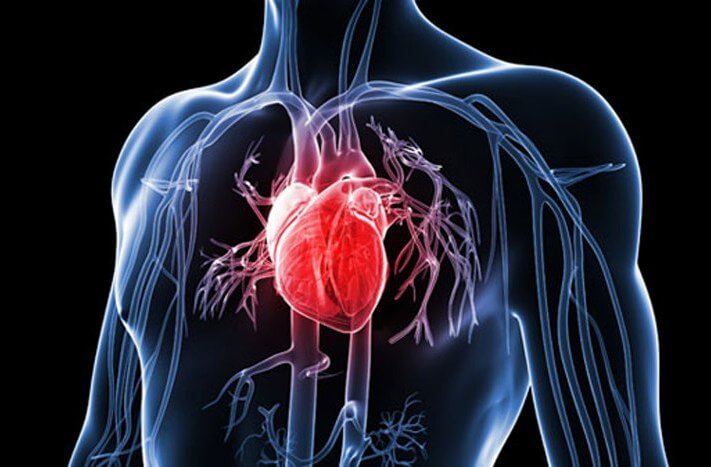Ischemic heart disease: Causes, symptoms and treatment
Most people know the symptoms and consequences of suffering an angina or heart attack. However, few know what the main causes that cause them are: ischemic heart disease. Also known as coronary heart disease, this disease reduces the amount of blood flow that is delivered to the heart due to a blockage of the arteries.
Ischemic heart disease is divided into two types: myocardial infarction and angina pectoris, so the symptoms will vary in each of these. The treatment is fundamental in any case, but even more in those in which there is a greater risk of suffering serious consequences, such as a heart attack. Here, we will explain the causes, symptoms and treatment of ischemic heart disease.
Table of Contents
Causes of ischemic heart disease
The cause of ischemic heart disease is the formation of clots in the inner walls of the arteries responsible for supplying blood to the heart. This accumulation of plaque narrows the coronary arteries causing the passage of blood to be more limited and, as a consequence, the amount of oxygen that reaches it is also reduced. The factors that influence when suffering from ischemic heart disease are the following:
- Age and sex. It is more common in older men, affecting women equally after menopause.
- High levels of bad cholesterol.
- Smoking. Smoking considerably increases the likelihood of suffering from ischemic heart disease.
- Family history of premature ischemic heart disease.
- Hypertension. It implies an increase in the speed with which the heart beats, which increases the blood pressure.
- Obesity. Another of the factors that together with tobacco increase the risk of suffering from many cardiovascular diseases.
- Sedentary. Do not exercise the body through physical activity.
- Diabetes mellitus. A type of diabetes with which the pancreas does not produce enough insulin.
Types of ischemic heart disease
We can distinguish two types of ischemic heart disease:
Myocardial infarction
It occurs when a thrombus or clot in one of the arteries that supplies blood to the heart becomes obstructed, preventing blood flow to the heart. The seriousness lies in the amount of heart muscle that dies, which is known as necrosis. It manifests with chest pain and rapid medical attention is critical to increase the chances of survival.
Angina pectoris
Angina can occur in two different stages;
Stable angina pectoris. The person suffering from it feels pain in the thorax, which can radiate to other parts of the body, such as the jaw, shoulder, throat, arm and left wrist. It appears after physical exercise and its duration is 1 to 15 minutes, after which it disappears.
Angina of unstable breast. It is a symptom that there is a high risk of suffering a heart attack. Unlike the infarction, in this case the obstruction of the artery is not complete, so the heart tissue does not die because there is no necrosis.
Ischemic heart disease symptoms
Although the symptoms will vary depending on the type of ischemic heart disease that is suffered, we can group a series of them in a general way:
- Pain and pressure in the chest.
- Pain in other parts of the body such as neck, jaw, back, shoulders, left wrist.
- Difficulty breathing, known as dyspnea.
- Sensation of weakness.
- Dizziness.
- Sickness.
- Excessive sweating.
- Arrhythmia or Irregular heart palpitations.
- Pain when exercising.
Diagnosis
The diagnosis of ischemic heart disease can be made through various medical tests. The medical history will be a fundamental element to define the problem accurately.
Electrocardiography. It is done by placing patches that measure the activity of the heart through a machine that contains the electrodes (patches). This test allows you to detect abnormal heart beats, such as arrhythmia and other signs that indicate the presence of a disease. It is a simple and painless test.
Ergometry. Also called stress test, it consists of performing physical exercise by the patient to observe the functioning and reaction of the heart and detect possible alterations of the heart. It is an effective test when there is angina pectoris or other cardiovascular problems that manifest with physical exercise.
Echocardiography. It allows to visualize an image of the heart in movement, being able to know its size, shape, movement and other factors that indicate its state. This test is performed by ultrasound that does not generate radiation, so it does not have any kind of side effect.
Holter. It consists of applying a device externally for 24 hours to record the activity of the heart without having to stay in the hospital. After this period of time, this small device is connected to a computer to expose the record that has been taken from the heart and detect any abnormality.
Blood tests. It allows the detection of cholesterol levels in blood as well as other possible symptoms in the blood that could mean an increased risk of cardiovascular diseases.
Treatment for ischemic heart disease
The best treatment for both ischemic heart disease and for any other cardiovascular disease is prevention by adopting a healthy lifestyle. These are the prevention factors that should be taken into account:
- No smoking. One of the most important factors to significantly reduce the risk of heart disease.
- Control other diseases. Diabetes, high cholesterol, and all other conditions contribute to an increased risk of heart problems. Therefore, a control of these will be fundamental.
- Exercise. Exercise improves blood circulation, regulates blood pressure, helps maintain an adequate weight, is good for the joints, as well as other psychological benefits.
- Diet. A varied and balanced diet reduces the chances of suffering from ischemic heart disease.
- Proper weight. If obesity is a factor that increases the risk of developing a cardiovascular disease, there is no doubt that maintaining an appropriate weight will help to improve health and well-being.
In addition to the guidelines to take into account to reduce the chances of suffering from ischemic heart disease, it is very important to go to the doctor to periodically monitor the good health, and more if you have previously detected a heart problem.
In addition, some of the possible risk factors have no symptoms, such as high cholesterol or low levels of diabetes, or that a blood test will be essential.
Sometimes it will be necessary to administer medications to reduce the risk of suffering from ischemic heart disease, such as aspirin, medications that reduce cholesterol, etc.
On the other hand, in those severe cases in which a heart attack has already occurred or the patient has very high probabilities of suffering from it, surgery may be required:
Coronary artery bypass. It consists of grafting arteries or veins from a part of the body, such as the leg, chest or wrist next to a coronary artery to facilitate blood flow to the blocked area. Sometimes, more than one bypass is needed.
Balloon angioplasty and Stent placement. By this procedure it is possible to open the clogged arteries by placing a small inflated balloon. On the other hand, a sent is something similar to a mesh that allows keeping the blocked artery adhering to the walls and improving the flow of blood.

